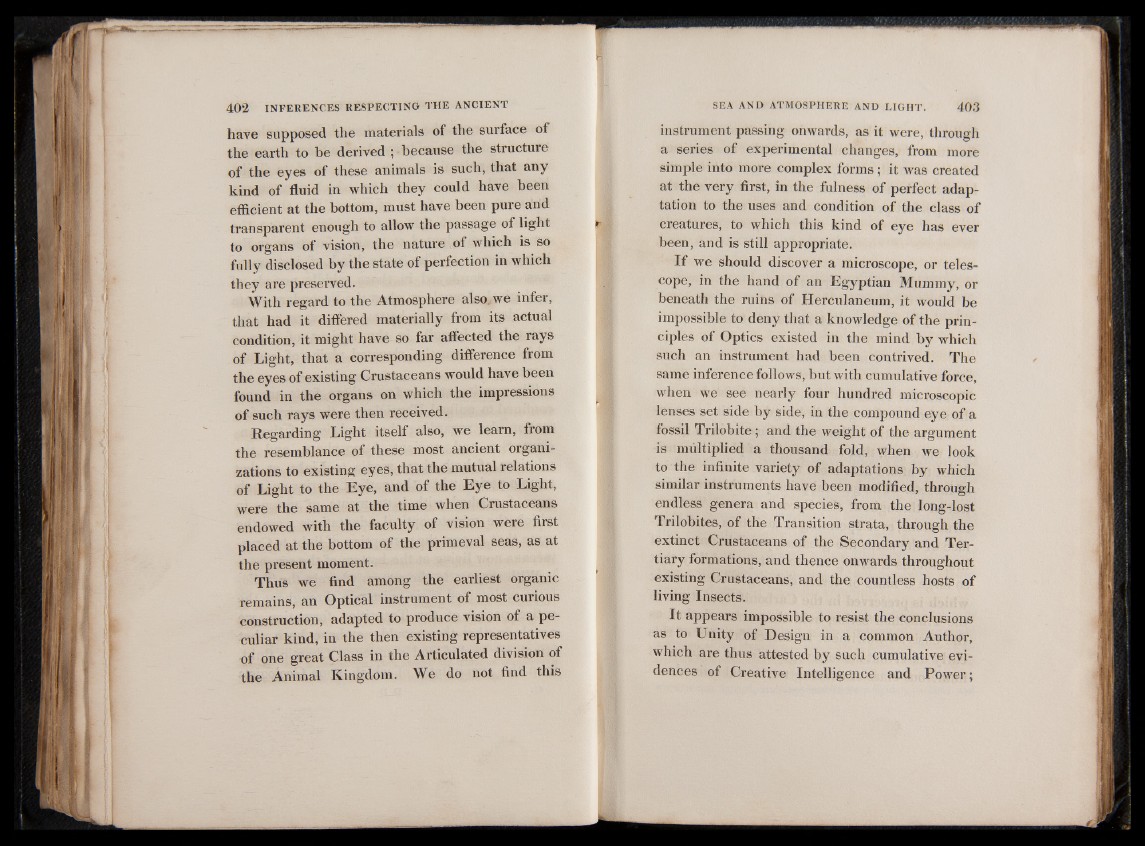
have supposed the materials of the surface of
the earth to be derived ; because the structure
of the eyes of these animals is such, that any
kind of fluid in which they could have been
efficient at the bottom, must have been pure and
transparent enough to allow the passage of light
to organs of vision, the nature of which is so
fully disclosed by the state of perfection in which
they are preserved.
With regard to the Atmosphere also, we infer,
that had it differed materially from its actual
condition, it might have so far affected the rays
of Light, that a corresponding difference from
the eyes of existing Crustaceans would have been
found in the organs on which the impressions
of such rays were then received.
Regarding Light itself also, we learn, from
the resemblance of these most ancient organizations
to existing eyes, that the mutual relations
of Light to the Eye, and of the Eye to Light,
were the same at the time when Crustaceans
endowed with the faculty of vision were first
placed at the bottom of the primeval seas, as at
the present moment.
Thus we find among the earliest organic
remains, an Optical instrument of most curious
construction, adapted to produce vision of a peculiar
kind, in the then existing representatives
of one great Class in the Articulated division of
the Animal Kingdom. We do not find this
instrument passing onwards, as it were, through
a series of experimental changes, from more
simple into more complex forms; it was created
at the very first, in the fulness of perfect adaptation
to the uses and condition of the class of
creatures, to which this kind of eye has ever
been, and is still appropriate.
I f we should discover a microscope, or telescope,
in the hand of an Egyptian Mummy, or
beneath the ruins of Herculaneum, it would be
impossible to deny that a knowledge of the principles
of Optics existed in the mind by which
such an instrument had been contrived. The
same inference follows, but with cumulative force,
when we see nearly four hundred microscopic
lenses set side by side, in the compound eye of a
fossil Trilobite; and the weight of the argument
is multiplied a thousand fold, when we look
to the infinite variety of adaptations by which
similar instruments have been modified, through
endless genera and species, from the long-lost
Trilobites, of the Transition strata, through the
extinct Crustaceans of the Secondary and Tertiary
formations, and thence onwards throughout
existing Crustaceans, and the countless hosts of
living Insects.
It appears impossible to resist the conclusions
as to Unity of Design in a common Author,
which are thus attested by such cumulative evidences
of Creative Intelligence and Power;